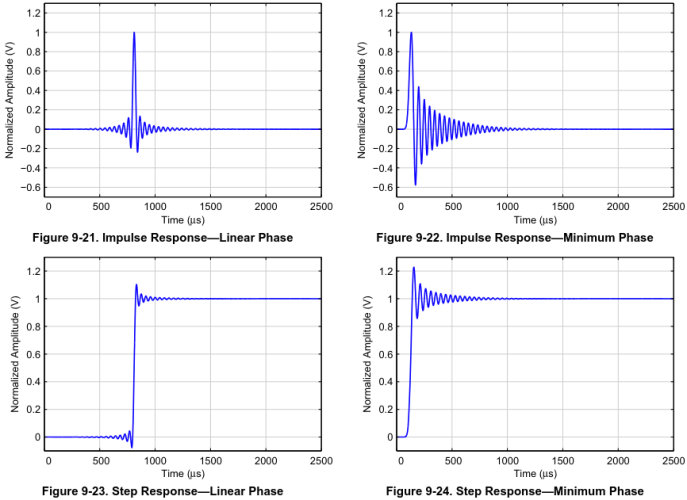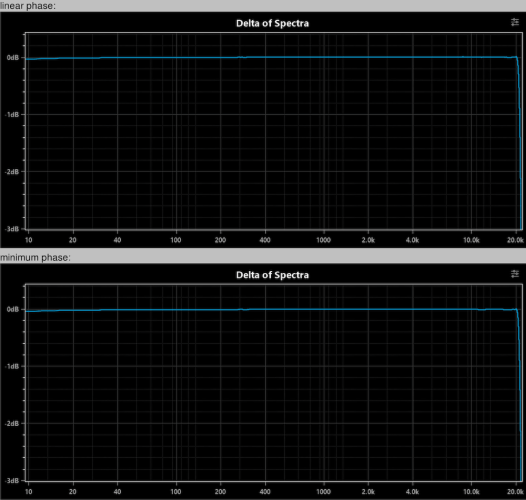I learned, the optimal impulse response is supposed to look like this

This means, the impulse response and step response on the left side is correct, right?

Now, because i was curious how exactly these two filters affect the actual result when playing music or white noise, i tried to measure the difference and analyze them with DeltaWave. Afterwards, i thought, why not compare both to the original source file. To my surprise, the right filter was closer.
This is the difference between the left filter and the source

This is the result of the right filter compared to the source

Did i misunderstood something or is this just an side effect that has nothing to do with the correctness of the filter?

This means, the impulse response and step response on the left side is correct, right?

Now, because i was curious how exactly these two filters affect the actual result when playing music or white noise, i tried to measure the difference and analyze them with DeltaWave. Afterwards, i thought, why not compare both to the original source file. To my surprise, the right filter was closer.
This is the difference between the left filter and the source

This is the result of the right filter compared to the source

Did i misunderstood something or is this just an side effect that has nothing to do with the correctness of the filter?
Last edited:



















